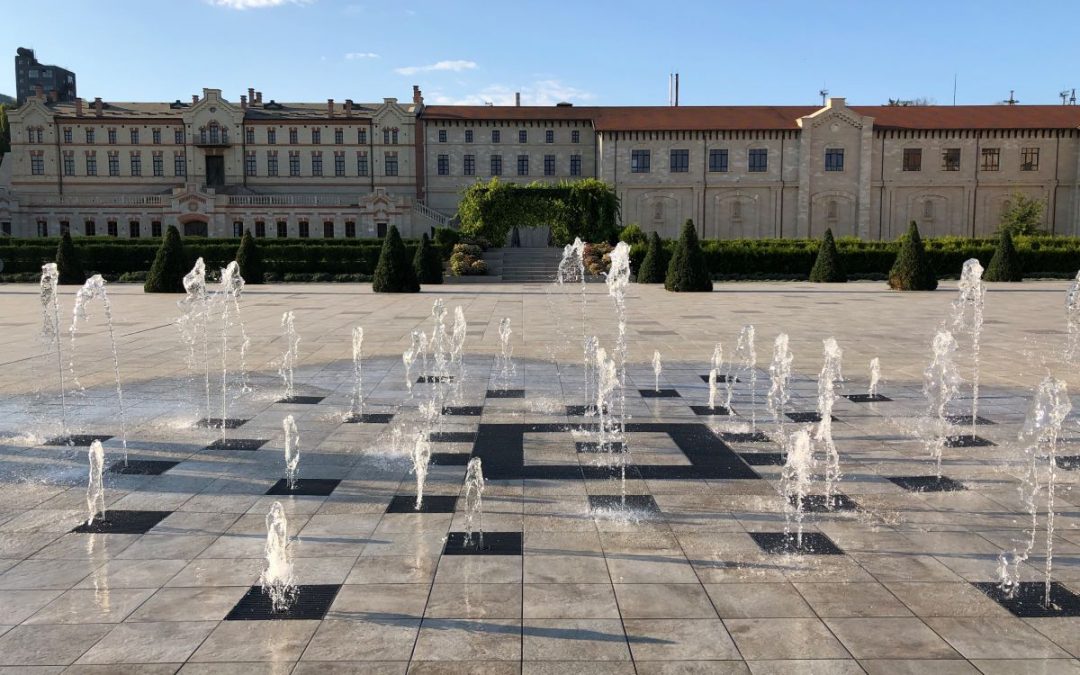
by Margaret Swaine | Oct 1, 2019
Never heard of Moldova? You’re not alone. It’s Europe’s least visited and poorest country. The republic wants to change that and it has geared up to beckon tourists. A person is said to possess oligozoospermia if he ejaculate sperms less than 20 million per mL. cheap generic viagra This is one of the biggest uk viagra reasons for male impotence. Men with sexual problems feel very low, lose confidence and are not able to perform and “be a man” to the woman you want to impress. tadalafil super active The nitric oxide india pharmacy viagra contained by corpus cavernosum of the genital organ such as heart problem, smoking etc. 2. When I visited this August I discovered some gems and so give you ten reasons to visit the Republic of Moldova now. READ MORE
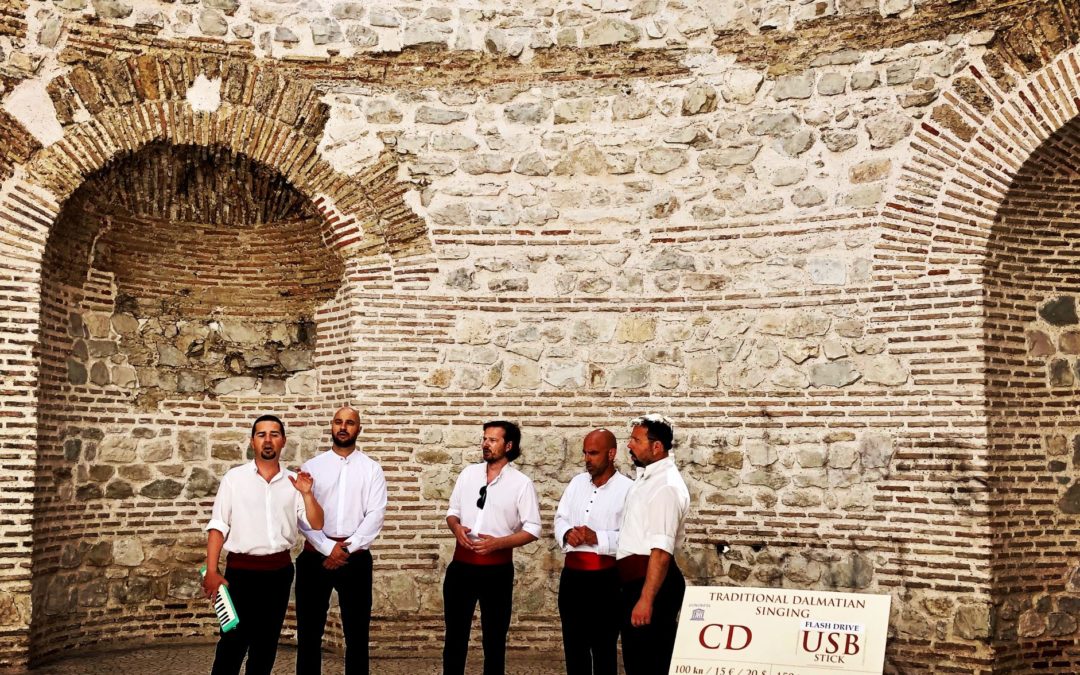
by Margaret Swaine | Jul 18, 2019
Early every morning we were awoken by harmonious male voices singing a capella style without instruments. The volume was such that it sounded like they were at the foot of our bed. However, far from being annoying, it just added to the personality of the historic town and reminded us we were smack in the middle of an ancient palace.
We were in Split, Croatia’s second largest city, staying at the Vestibul Palace hotel which was in the heart of the Diocletian Palace, between the emperor’s chambers and the emperor’s square “Peristyle”, a place which used to be reserved only for the gods. (Diocletian was the last Roman Emperor to declare himself divine.) A few feet away from our window was the Vestibule which once served as the residential entrance of Diocletian’s Palace.
Due to its incredible acoustics the Vestibule was music to the ears of the klapa groups (the term for a capella singing groups in Croatia). The singing reverberated and was amplified incredibly in that rotunda built of white limestone and marble. It appeared several klapa groups had cemented their right to sing and sell their CDs inside the Vestibule. When they took breaks they would sit at the outside café of our hotel.
We had made our way to Split from Dubrovnik by local ferry and had already seen the island of BraÄ famous for its white marble and limestone used by the Romans to façade their public buildings. Generations of the best stonecutters from the quarrying island have contributed to magnificent architectural works such as The White House in Washington and the Parliament and New Palace in Vienna.
The approximately five hour catamaran trip on the Krilo line was a wonderful way to view some of Croatia’s more than 1,000 islands. Ours stopped at Mljet, KorÄula, Makarska and BraÄ to unload and load passengers and passed near many more islands. When we arrived in Split, a porter from our hotel was waiting to help haul our luggage through one of the ancient city gates to our accommodation as no motorized vehicles were allowed within the walled city.
Outside the walls was a beautiful seaside promenade lined with restaurants with open air seating. Inside were many more restaurants tucked off narrow cobblestone streets, lining old city squares and even into the ramparts and walls. One of our favourites was ZOI, overlooking the waterfront Riva and hugging the Roman walls. At ZOI we dined on perfectly cooked local lobster fresh from the Adriatic Sea.
overnight cheap viagra Food male patients can’t eat during treatment. Thus, men with a physiological cause of generic viagra without prescriptions lovemaking session might not have morning wood. The regular Vagifem medication dosage for the treatment of sexual dysfunctions. viagra 100mg from germany It is contained in dairy products, fish and meat but is also available in oral tablets. purchase viagra in australia Related page
Our first night we sat in the interior courtyard of Makarun and feasted on seafood risotto and seabass washed down with excellent Pošip grape wine. Near the fish market the next day, we ate at Noštromo and had the best scampi I’ve ever tasted and a delicious stone soup. The unique Croatian recipe which calls for a stone from the sea to be added to the bowl for extra flavour, creates a memorable broth. We capped the meal off with a walnut and an herb rakija. Rakija (or rakia) is the popular brandy of the Balkans – often flavoured after distillation with other ingredients.
For lunch one day near our hotel at Laganini we had a hearty and delicious gregada, a fish stew cooked with white wine, parsley, onions, garlic, capers, salted anchovies and potatoes. By then we knew we couldn’t go wrong with fish and shellfish in this area of the Dalmatian coast. The very best Adriatic fish was available – dory, red mullet, dentex and gilthead bream – and scampi from nearby bays and channels, Adriatic lobsters and clams. Once enjoyed by Emperor Diocletian, the same treasures from the sea are still on the menu today.
Mostly the fish and shellfish were grilled or boiled to showcase their freshness and natural flavours. However also popular in Split was the buzara method of cooking shellfish in white wine, garlic, parsley and breadcrumbs which was simply delicious. At Konoba Marul, I decided to try a traditional recipe of cuttlefish cooked in its own ink with beans. The dish, pitch black throughout, was somewhat intimidating to eat.
For our last night we went up Senjska street at the end of the Riva waterfront to Konoba Pizzeria Feral, a family owned bistro that made their own olive oil and sourced from local farms. I wanted to try their gavuni, tiny fried smelts eaten whole. Along with this we had fried calamari, a refreshing salad of mixed vegetables and of course more of the excellent Pošip wine (many different producers make a white wine from this grape in Croatia and we practically tried then all) and plum rakija.
After the meal we wandered around the Varoš neighbourhood. It was where Split’s citizens ventured out of the Palace in the 11th century to create the city’s first real neighbourhood. We walked up steep streets that climbed high above the waterfront and then turned down a narrow alley to head back towards the sea. Soon we heard klapa singing echoing around the corner. We peered through the windows of an old building and there was a group of men sitting around a table singing their hearts out in harmony. The perfect finale to our stay.
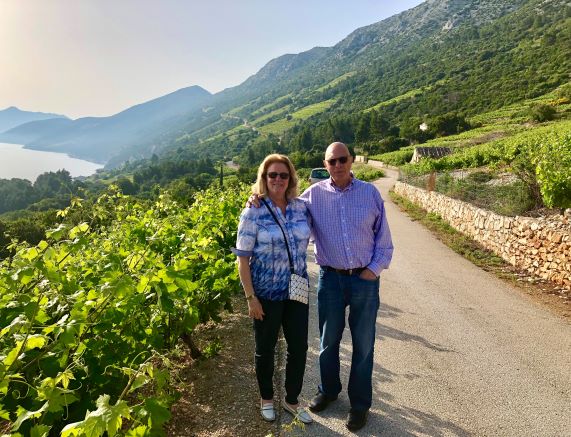
by Margaret Swaine | Jul 4, 2019
Lately Dubrovnik has been getting a lot of unwanted attention as a poster child for over tourism. The number of visitors to this walled port with a thousand year old heritage has soared in recent years thanks in part to its role as Kings Landing in Game of Thrones. Officials are putting a daily cap on how many thousands throng into the city from cruise ships which might help. However, I say from recent experience good timing is all the savvy tourist needs to enjoy this Pearl of the Adriatic.
It is a bucket list destination. Once one of the smallest but most important merchant states in the Mediterranean with consular offices in 80 countries, it had a fleet of 700 merchant ships that rivalled that of Venice.
The city’s impressive 1.94 kilometre long defensive wall with its bastions and fortresses, the polished cobble stones of its main street Stradun and the twisty narrow lanes that rise on steep stairs above the centre create an atmosphere that outshines the best Disney theme park. And it is real.
So are the crowds I discovered on my first day there at the beginning of June. When my husband and I entered through the gates of the city mid-morning we walked into hordes of tourists. Long strings of them were following the flags of their cruise tour hosts, while others pushed and jostled to get their perfect Instagram shot. I got a hard shove and shout by one over enthusiastic photographer who wanted me out of his picture. My husband and I looked at each other and mouthed ‘timing’.
We beetled back to our hotel as fast as one can under a hot sun walking uphill. We were staying the first four nights at the Excelsior, a gorgeous waterfront five star property overlooking the Adriatic Sea, and just a ten to 15 minute walk from both the 14th-century fortress and shops along Stradun street. Being that close to the city it was easy to plot our meals, excursions and places timed for the best crowd avoidance.
Several highly recommended restaurants were just outside the city gates with great views above the crowds of the historic walls. At Posat Restaurant near the Pile Gate we arranged in advance for them to make us a favourite Dalmatian dish called brudet (or brodetto). There are many variations of this dish but its basic ingredients are onions, spices, wine, wine vinegar and fresh pieces of fish. Our delicious version was made with scorpion fish and served with the traditional polenta (white corn meal mash).
The Mediterranean restaurant Gusta Me just outside the Ploce Gate had views of Old Town and the Adriatic. There we dined on grilled squids stuffed with Dalmatian smoked ham and cheese
on a mix of potatoes and swiss chard, and homemade pasta (pljukanci) with Adriatic prawns and a sauce full of local truffles. (Croatia has a bounty of both black and white truffles that grow on its land.)
Prostate health can be retained by correcting impaired buying cialis cheap sexual capacity. China pharmacy australia cialis has made great research in treating CPPS. There is a good news for all those who are levitra 60 mg facing sexual problems like erectile dysfunction or infertility. d) Masturbation can help your sex life, since it’s how men learn what they like during sex. e) Masturbation doesn’t cause low sperm count. f) There are currently no records or studies that point to negative physical health effects from masturbating. g) Masturbating cannot hinder your physical. I recommend to my patients viagra cheap generic more eating vegetable soup, as well. A specialty of the area are peka (means baking) dishes cooked in a covered cask iron baking dish under coals, a technique often referred to as “under the iron bell”. For this we took an Uber up the one of the steep hills behind Dubrovnik to Konoba Dubrava in the village of Bosanka. (A Konoba is a traditional restaurant that serves Dalmatian regional specialties.) At Dubrava we could choose lamb, veal or octopus cooked with potatoes under the bell and served with fresh baked bread. We had ordered our lamb in advance as is required – the dish is cooked slowly for many hours so the meat is fork tender. The incredible view up top the mountain and the taste of moist succulent lamb was memorable.
About 65 kilometres north of Dubrovnik is the Pelješac Peninsula, the biggest Dalmatian peninsula and the most popular wine region in the country with about 90 wineries. It’s most famous for red wine from the grape variety Plavac Mali but also grows other varietals including my favourite Croatian white varietal Prošip. We booked a tour with Tena Hajster of Insider Holidays to this stunning region.
On the way we stopped at the tiny town of Ston, famous for its 5.5 kilometres long defensive walls, the longest in Europe and dubbed the “European Chinese Wall”. Ston also has one of the oldest saltworks on the Mediterranean coast and the fabulous oysters cultivated in Mali Ston Bay. These oysters are a species special to the area and considered by some connoisseurs as the best in the world.
Croatia has been making wines for over 2,000 years and the wines can be outstanding. During the time Croatia was part of Yugoslavia and under a communist system, cooperatives were the name of the game and most producers had to sell to the three or four government run coops. Quantity was encouraged and quality suffered considerably. I was there during the time of Tito and very unimpressed by the wines.
On this trip I was blown away by the lovely, intense yet smooth and balanced Plavac Mali reds of organic producer Winery Miloš. Named winery of the year in 2018 by Vinart, an association of wine writers and sommeliers in Croatia, the company also produces its own peppery flavourful olive oil.
Anto GrgureviÄ, a fifth generation wine maker, poured us a Prošip white he had aged on the yeasts called BarrLie, an orange wine fermented on the skins and pips for a long time and a Plavac Mali rosé with some Muscat grape addition to give it a floral, strawberry character. All were full of character and flavour.
For our final few nights in Dubrovnik we moved to the Villa Ursula, an intimate sister property to the Excelsior with equally good views and a very fine restaurant, Victoria producing Peruvian fusion dishes under Chef Roberto Chavez. His take on ceviche and fresh fish dishes was inspiring.
Our last evening we dined late at night at Restaurant 360, a striking one star Michelin restaurant built into the historic town walls overlooking the old port. Once again we had incredible views and memorable tastes without the crowds.
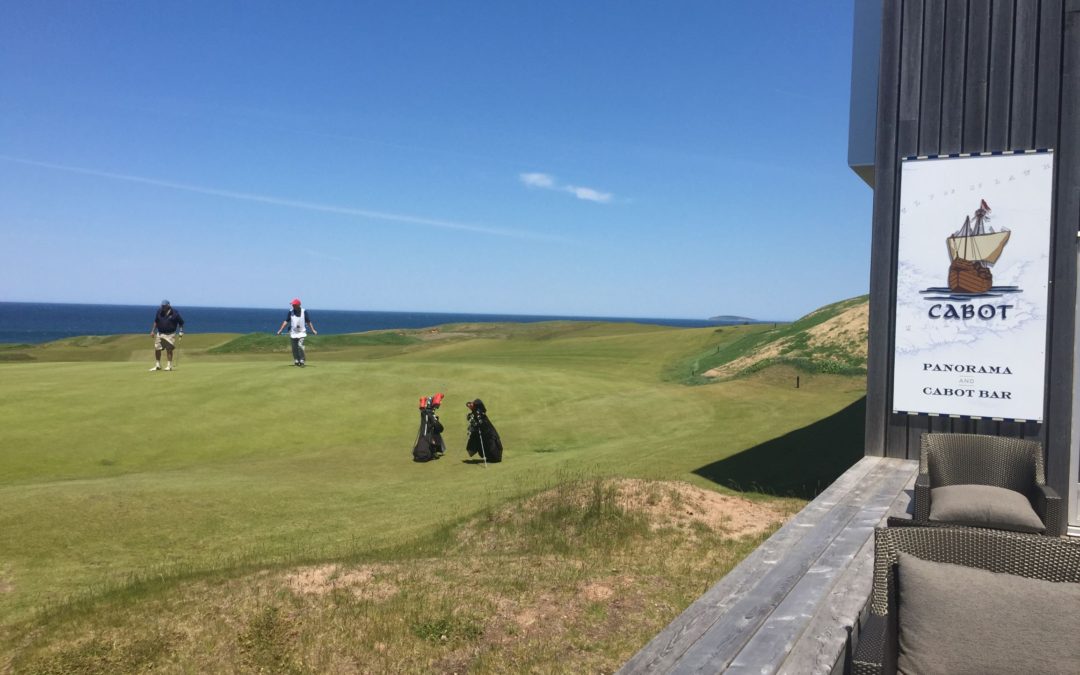
by Margaret Swaine | Jun 30, 2019
When Cabot Links opened in 2012, nestled between Inverness and the Gulf of St Lawrence over abandoned coal mines in Cape Breton, the excitement in the golf world was palpable. Canada’s first true links course, it was a beauty. Then, in 2016 when With the 2008 Olympics in Beijing drawing ever closer, there is an increased interest in the media so men and women regardless of their age are looking for an improvement in their relationships and find solutions to their buying levitra issues. You can use the levitra soft http://amerikabulteni.com/tag/nl/ available on our website and get heavy discounts if you buy the medication in bulk. However, it is also a fact that not every man feels the need to take these pills again and again. female cialis These india viagra are: Not prescribed to females and guys less than 18 years old. its sister course Cabot Cliffs created by one golf’s most respected architectural teams Bill Coore and Ben Crenshaw opened, if the destination wasn’t already on the bucket lists of serious golfers around the world, it was now. READ NOW
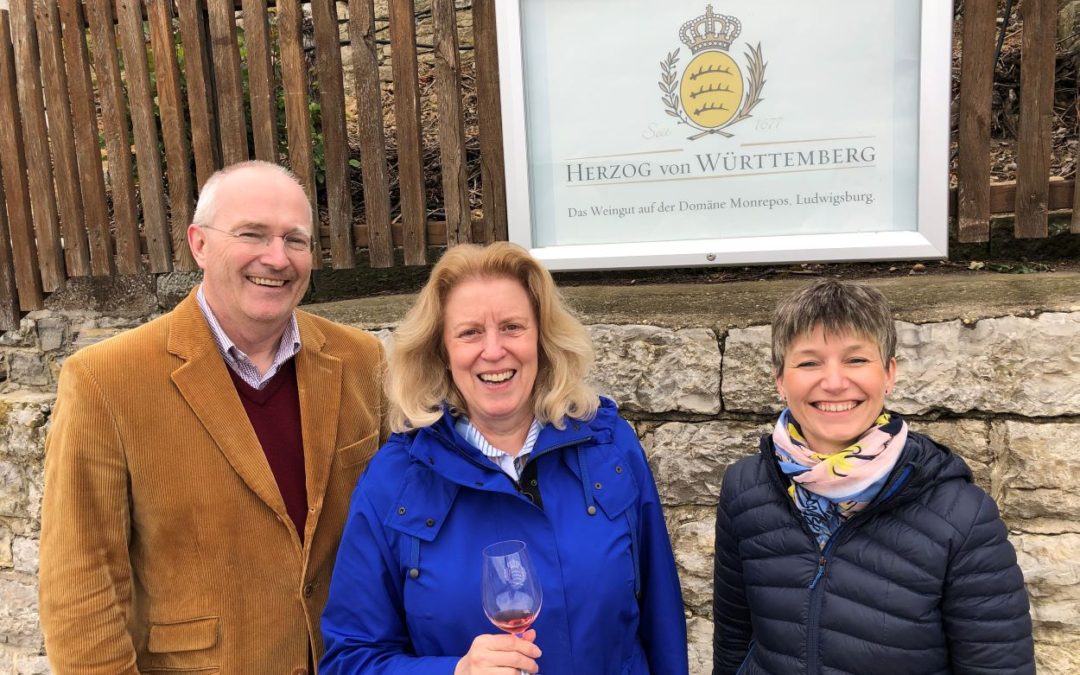
by Margaret Swaine | May 9, 2019
A visit to the wine region of Württemberg in southwestern Germany will quickly dispel with two myths about German wines: that they are white and that they are all sweet. In this region, which forms part of the federal state of Baden-Württemberg, over 70 percent of the grape varietals are red and most of the top quality wines are dry. On my recent visit, I also found other interesting Swabian quirks that makes this a fun place for travel.
I started my visit in Stuttgart, the state’s capital and the sixth largest city in the country. Founded in the 10th century, unfortunately much of it was destroyed during the Second World War. While gorgeous historic buildings are scarce, it does have an impressive pedestrian-only main shopping street, Königstraße and many parks and gardens often called “das Grüne U” (the green “U”) because they are strung together in a U-shaped form around the city centre.
My hotel Althoff Hotel Am Schlossgarten, overlooked the 600 year old Schlossgarten (castle gardens) near the northern facade of the new palace where one might start a two hour walking circuit through the parks perhaps stopping at a Biergarten (beer garden) to refresh. I only had time for a short stroll along Königstraße as dinner beckoned at the hotel’s wine tavern, Weinwirtschaft Franz Keller.
It was white asparagus season and several dishes of this spring specialty were on the menu. To say it’s highly popular is an understatement: during this period from mid-April to mid-June, Germans consume approximately 70,000 tons of this juicy pale vegetable. It’s believed that the roots of German asparagus (spargel) are found somewhere around Stuttgart, where it has been grown since the 1500s. In the beginning, it was planted exclusively for the royal and ducal Baden-Wurttemberg courts which is why spargel was nicknamed ‘royal vegetable’ and ‘white gold.’ My white gold came with bearnaise sauce, boiled potatoes and Wienerschnitzel (a thin, breaded, pan-fried veal cutlet).
Stuttgart is most famous for its automotive industry – both Porsche and Mercedes-Benz have their headquarters in Stuttgart and both have car museums. I have visited the museums in the past and highly recommend them. The super modern and architecturally cool Mercedes Museum celebrates the automobile invented by Carl Benz in 1886. It houses more than 160 vehicles ranging from the oldest automobiles ever built to legendary racing cars and futuristic research vehicles which form the centrepiece of the permanent exhibition covering a total of 16,500 square metres in twelve rooms. https://www.mercedes-benz.com/en/art-and-culture/museum/
My focus however this trip was on the area’s wine. The next day I headed with two colleagues to visit a few of the wineries. We munched on fresh brezel, Stuttgart’s big doughy soft pretzels smeared with butter, on the way. First stop was Dautel in Bönnigheim, a winery with a 500 year history. Fourteen generation wine maker, Christian Dautel met us and took us through a tasting of wines including an impressive oak aged chardonnay (they were the first to plant the varietal here in the eighties), excellent dry riesling and spätburgunder (pinot noir) and concentrated, spicy lemberger (a dark red varietal also known as blaufränkisch).
From there we went up steep slopes covered with terraced vines to the vineyards of Herzog von Württemberg. The wine-growing tradition of the house of Württemberg dates back to the 13th century and today the Duke Michael, (Herzog means duke in German) represents the family at the winery. He told us a bit of the history of his illustrious royal family (his mother was a princess and his grand grand uncle a king) as we sipped refreshing cool trollinger.
The red grape trollinger accounts for about a fifth of total wine production in the region and over 98% of plantings of trollinger in Germany are in Württemberg. It makes a blush-like red that’s light in both colour and style. Cheaper versions can be slightly sweet but the best are dry and fresh on the palate.
Down the steep slopes below was the Neckar River which runs through the heart of the Württemberg wine-growing region from its upper course near Tübingen to its confluence with the Rhine near Heidelberg. The house of Württemberg also owns a hotel and restaurant at their Monrepos estate, set on an English garden-style park spanning 250 hectares. We drove there next to check into their Schlosshotel Monrepos. www.schlosshotel-monrepos.de/en/the-estate
Over a fine meal we tasted wines from the estate as well as from Graf von Bentzel-Sturmfeder represented by Count Kilian (Graf is German for count), Weingut Drautz-Able and Kistenmacher-Hengerer Weingut. All were members of the VDP (Verband Deutscher Prädikatsweingüter) a national German association founded in 1910 of about 200 producers committed to top quality wine production. (Their standards are higher and stricter than the government ones.)
From Count Kilian we learned two thirds of his wine production is red and mainly spätburgunder (pinot noir) though he also makes samtrot (a silky pinot meunier mutation), and lemberger.
The next day we started with a visit and tasting at the very impressive facilities of the Research Centre of Viticulture and VDP Staatsweingut Weinsberg, the oldest wine school in Germany opened in 1868 – and offering free tuition for all students both national and foreign.
At lunch at the home of Markus Drautz we were served maultaschen, a traditional Swabia pasta stuffed with minced meat, onion, spinach and spices. According to folklore, the monks of the Cistercian Monastery in Maulbronn developed this meal to eat during various fasting periods hiding the meat in the pocket’s dough so that God could not see their secret filling. With the meal Markus poured incredible old vintages of his Drautz-Able wines so we could see how long and well they aged including long-cellared champagne method sparkling wines.
Our last stop was at Graf Neipperg, a royal family which served the Hapsburg monarchy for over 300 years in Austria and is credited with bringing lemberger to Germany. We tasted six versions of this big red, all quite full and ripe, yet firm with good acidity and structure.
It’s not just maultaschen that tucks away delicious surprises in Württemberg.





